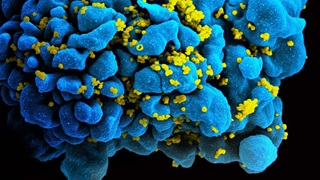Pew Bertarelli Ocean Legacy Project Commends Chile’s Declaration of the Rapa Nui (Easter Island) Rahui Marine Protected Area
Government moves to protect waters of Pacific island and its marine life
SANTIAGO, Chile—The Pew Bertarelli Ocean Legacy Project applauds the Chilean government’s declaration today of the Rapa Nui (Easter Island) Rahui Marine Protected Area (MPA) to safeguard the waters surrounding the iconic Pacific Ocean island, which is known—as are its inhabitants—as Rapa Nui.
With her announcement, President Michelle Bachelet fulfilled a 2015 commitment to conserve the waters of Rapa Nui. The MPA, one of the largest in the world, will protect an area about 740,000 square kilometers (285,716 square miles), roughly the size of Chile’s land area. Announced at the close of the Fourth International Marine Protected Areas Congress (IMPAC4) in Chile, the MPA will protect Easter Island from industrial fishing, mining, and other extractive activities within the Chilean exclusive economic zone that surrounds the island. The Rapa Nui’s artisanal fishing practices—fishing from small open boats using hand lines and rocks as weights—will be grandfathered into the management plans for the MPA. Residents of Easter Island endorsed the designation by a wide margin in a referendum just before the start of IMPAC4, with 73 percent supporting an MPA that includes artisanal Rapa Nui fishing practices. Their leaders had made the initial MPA proposal to the Chilean government in 2015.
“The government of Chile believes that public participation leads to better policy with a deeper connection to those who are affected, and we were committed to consultation with the Rapa Nui,” said Marcelo Mena, Chile’s minister of the environment. “That resulted in a vote to approve this marine protected area, limiting extractive techniques to those that are traditional to the Rapa Nui people.”
“This marine protected area,” he said, “adds to the legacy of President Bachelet and the 1.5 million square kilometers of protected areas created by this government.”
Easter Island, which sits 4,000 kilometers (2,485 miles) west of mainland Chile, is a UNESCO World Heritage site that is world famous for its Moai statues. The efforts by the Rapa Nui to create the MPA—home to at least 142 species found nowhere else, including 27 that are threatened or endangered—will ensure that the residents are known as global leaders in marine stewardship. In addition to hosting numerous endemic species, Easter Island’s waters are important spawning grounds for many migratory species, such as tuna, marlins, and swordfish.
Matt Rand, director of the Pew Bertarelli Ocean Legacy Project, said, “The Rapa Nui understand that a healthy marine environment is directly tied to their traditions and way of life. A thriving environment can help maintain a society’s culture and traditions.”
“This designation begins a new chapter in the island’s history and serves as a lesson to other nations and communities that marine protected areas can strengthen ocean resilience,” Rand added.
“We are delighted that President Bachelet has designated the Rapa Nui Rahui MPA, which protects one of the last true ocean wildernesses on the planet,” said Dona Bertarelli, co-president of the Bertarelli Foundation.
She added: “The Rapa Nui’s heritage is inextricably tied to the sea, and we are proud to have supported them on this journey to conserve their ocean habitat for future generations.”
The Pew Charitable Trusts and the Bertarelli Foundation have supported the Rapa Nui’s efforts to protect Easter Island’s waters since 2012. The partnership between Ocean Legacy and the Rapa Nui led to the most comprehensive scientific assessment of the island’s marine environment ever completed, as well as an analysis of the potential economic impact of the proposed MPA. Ocean Legacy worked with Rapa Nui leaders on education and training for the local population, facilitated cultural exchanges with other Pacific Islanders, and planned how to effectively monitor for illegal fishing. A 2013 test of new technologies supported by Pew and Bertarelli used satellites to detect illicit activities in Easter Island’s waters.
“The Rahui MPA is a recognition of the community process that has gone on the last five years,” said Sebastian Pakarati of the Mesa del Mar, a coalition of more than 20 local organizations on Rapa Nui. “It will safeguard our waters from industrial fishing, give us control over our own waters and resources, protect our way of life, and strengthen the Pacific Ocean and its growing network of protected areas.”
Before the start of IMPAC4, only about 3 percent of the world’s oceans had any protections, while just 1.6 percent were strongly protected. The Easter Island Marine Protected Area and other national efforts announced at the congress will help boost the amount of protected waters worldwide.
The International Union for Conservation of Nature has adopted scientists’ recommendation that world leaders should conserve at least 30 percent of the ocean by 2030 to maintain biodiversity, boost fisheries productivity, and safeguard the myriad economic, cultural, and life-supporting benefits of the seas. The Pew Bertarelli Ocean Legacy Project remains committed to collaborating with local communities, governments, scientists, and stakeholders around the world to reach this ambitious target.
About the Pew Bertarelli Ocean Legacy Project
The Pew Charitable Trusts and the Bertarelli Foundation joined forces in 2017 to create the Pew Bertarelli Ocean Legacy Project. This effort builds on a decade of work by Pew’s Global Ocean Legacy initiative, which helped to obtain commitments to safeguard more than 2.4 million square miles (6.3 million square kilometers) of ocean by working with philanthropic partners, indigenous groups, community leaders, government officials, and scientists.












